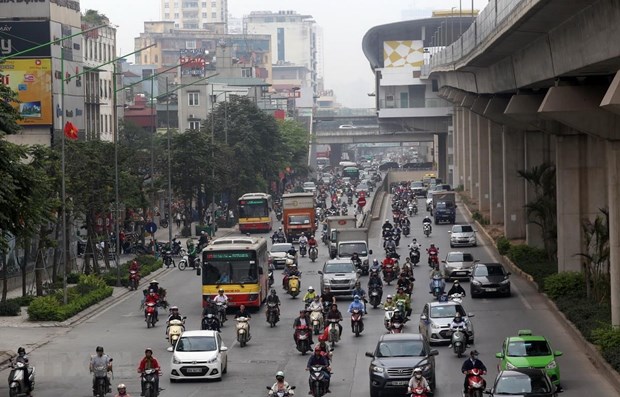Hanoi to focus on air quality monitoring
Hanoi plans to set up more air quality monitoring stations in the face of worsening air pollution, according to local authorities.
 The excessive PM2.5 density is mainly recorded in areas with busy construction activities or heavy traffic (Photo: VNA)
The excessive PM2.5 density is mainly recorded in areas with busy construction activities or heavy traffic (Photo: VNA)Hanoi (VNA) – Hanoi plans to set up more air quality monitoring stations in the face of worsening air pollution, according to local authorities.
The average level of fine particulate matter (PM2.5 – particles less than 2.5 micrometers in diameter) – in 24 hours on some days in the first quarter of 2019 exceeded the permissible level of national technical standards for air quality.
The high PM2.5 density concentrated in January and March, especially on January 11-13, January 19-20, January 23-26, March 11-14, March 20-22 and March 26-27.
These are results collected from automatic monitoring stations located on Nguyen Van Cu street of the Vietnam Environment Administration (VEA), 10 other stations of the Hanoi Department of Natural Resources and Environment and the facility of the US Embassy.
However, the excessive PM2.5 density varied in different areas. Among the 12 automatic monitoring stations across Hanoi, those recording many days with density are mostly located in areas with busy construction activities or heavy traffic like Pham Van Dong and Hang Dau streets and Minh Khai ward of Bac Tu Liem district.
In other areas, the rate of days with excessive density was “relatively low”, local authorities reported, adding that air quality recorded at those stations was mainly at the average level in the first three months.
The number of days with air quality at good and average levels was “relatively high” in outlying areas or areas with airy or green spaces like Nguyen Van Cu street, Tan Mai ward of Hoang Mai district, or My Dinh area and Tay Mo ward of Nam Tu Liem district.
In Hanoi and some other northern localities, air pollution usually increases in winter and early spring. Additionally, PM2.5 density surges during rush hours when traffic becomes heavier.
The Hanoi environment department said the city has carried out a plan on air quality monitoring network until 2020, the first Vietnamese locality to implement such plan.
The department noted it will add at least three more automatic monitoring stations to the existing system to serve air pollution reduction efforts.
The VEA added the Ministry of Natural Resources and Environment and many big cities like Hanoi and Ho Chi Minh City have also been setting up monitoring systems to collect information about water, air and soil environment quality.-VNA













